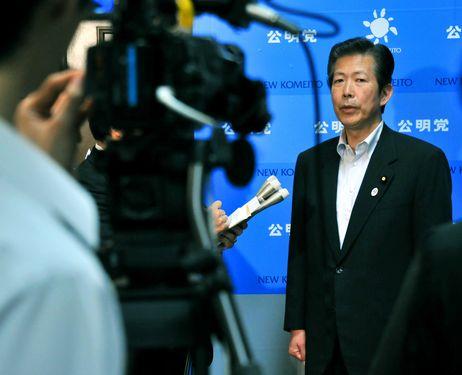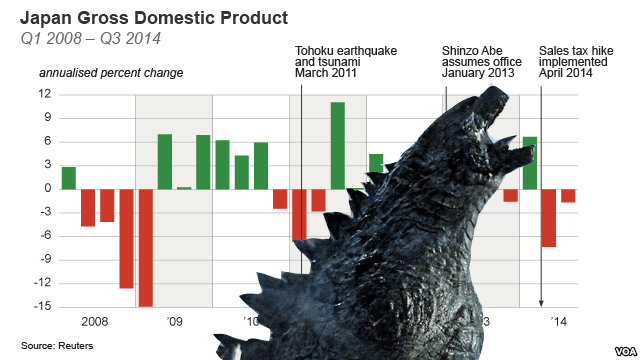In an interview with The Wall Street Journal, Japanese Prime Minister Shinzo Abe acknowledged that convincing the public to the need for collective-self defense and an expanded Japanese Self-Defense Forces (SDF). But before doing that, Abe has to convince his peace-loving coalition partner, New Komeito (background: I wrote a bit about New Komeito and constitutional reform a week ago). Starting today, Abe’s Liberal Democratic Party will begin talks with New Komeito about when it is appropriate to exercise the right to collective self-defense or make other military-related decisions. It will be paramount for Abe to get support from New Komeito before his Cabinet is able to reinterpret the constitution.
The government developed 15 emergency cases in which the use of force might be appropriate; the two parties will begin discussing the cases. Abe seems to understand the concerns of their Ahead of the negotiations, the Abe Administration decided to exclude one “gray-zone scenario” at the request of the New Komeito party. One of the cases involves foreign submarines intruding Japanese waters and refusing to leave despite repeated warnings. After the government had some preliminary talks with New Komeito, the Abe Administration decided to drop the scenario out of concern that SDF involvement in such a case could lead to a potential escalation of the situation.
15 cases developed by the Abe Administration will be presented to the ruling Liberal Democratic Party and the New Komeito. The cases will be split into three categories, then presented for negotiations between the two parties on May 27.
The first category covers “gray-zone situations,” and is expected to be the first cases the two parties negotiate. Gray-zone situations are those where a war has not occurred but it is difficult for Japanese police or the Japan Coast Guard to address the situation under existing legislation.
The second category covers four situations that deal with international cooperation, including United Nations peace-keeping operations – or PKOs -- in which SDF members could be forced to use weapons. The four cases all involve SDF members dispatched overseas for PKO missions to rescue or assist civilians or other countries’ troops.
The third category concerns Japan exercising the much discussed right to collective self-defense in eight varying situations, including the use of force to protect a different nation even if Japan has not directly been attacked. This category also involve situations such as whether a SDF vessel can protect U.S. transport vessels carrying Japanese citizens in sea areas around Japan; whether SDF members can make counterattacks when commercial vessels, including Japanese-registered ones, are attacked by an armed group on the ocean; and whether SDF members can remove mines scattered on sea lanes.
The Abe Administration thinks that if New Komeito approves at least one of the eight cases from the third category, then it will be able to make a Cabinet decision to allow for the exercise of the right to collective self-defense. This would be a major boost for the Abe Administration and one of his long-time goals of expanding the scale and scope of the SDF.
Even though talks between the two parties start today, don’t expect the negotiations to be completed anytime soon. They are planning to discuss the 15 scenarios at a pace of one meeting a week, and there are expected to be a lot of disagreements. Japanese bureaucrats – or bureaucrats from any country for that matter -- are never the best at coming to a quick decision, so it’s not farfetched to expect this to take quite some time.
Originally published in Izakaya Politics.



